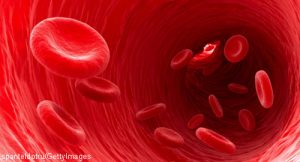 Several novel insights recently reported by the Outcome Measures in Rheumatology (OMERACT) Vasculitis Working Group get the rheumatology community closer to a core set of domains for large vessel vasculitis and will be used to establish outcome measures for use in clinical trials.1 These insights address definitions of subclinical disease activity in large vessel vasculitis and take into account patient perspectives regarding the aspects of therapy response important to them, such as pain and fatigue.2
Several novel insights recently reported by the Outcome Measures in Rheumatology (OMERACT) Vasculitis Working Group get the rheumatology community closer to a core set of domains for large vessel vasculitis and will be used to establish outcome measures for use in clinical trials.1 These insights address definitions of subclinical disease activity in large vessel vasculitis and take into account patient perspectives regarding the aspects of therapy response important to them, such as pain and fatigue.2
Clinical trials will now have validated definitions of remission, flare and patient-acceptable symptom state [PASS] to use. “The development of the definitions will provide a standardized approach—a tailored tool specifically designed for [large vessel vasculitis],” says Sibel Zehra Aydin, MD, a rheumatologist and associate professor of rheumatology at the University of Ottawa in Ontario, Canada. Dr. Aydin is the lead author of this latest OMERACT report.
Building Consensus
OMERACT is an independent initiative of international rheumatology health professionals interested in the development and validation of outcome measures in rheumatic diseases. Individual OMERACT groups hold consensus conferences every two years. The ongoing work of this OMERACT group has been to employ a data-driven approach to developing a core set of domains to shape standardized outcome measures for clinical trials of large vessel vasculitis treatments.
The comprehensive review of the literature conducted by this working group several years ago demonstrated a lack of standardized outcome measures for large vessel vasculitis.2,3 No broadly accepted definitions of important outcomes, such as disease activity or response to therapy, exist, Dr. Aydin explains. She also notes randomized controlled trials conducted for treatments targeting large vessel vasculitis diseases, such as Takayasu’s arteritis and giant cell arteritis, have usually based definitions of relapse and remission on the presence or absence of signs and symptoms and/or acute phase reactants. These measures are not consistent across studies.4
In 2016, the OMERACT group proposed a preliminary set of core domains for use in clinical trials of large vessel vasculitis, with additional disease-specific elements, such as pain and fatigue.5 From this preliminary set of domains, the group has been working to further identify subclinical disease activity and patient perspectives for outcome measures.
Subclinical Disease Activity & Patient Outcomes
Published data and clinical advances, such as PET (positron-emission tomography), are making it easier to identify large vessel vasculitis patients who appear to be in clinical remission but who still demonstrate disease activity.5,6 This ability is leading rheumatologists to discover subcategories of large vessel vasculitis, notes Antoine Sreih, MD, a rheumatologist and assistant professor of clinical medicine at Penn Medicine in Philadelphia. Dr. Sreih specializes in caring for large vessel vasculitis patients and is a member of the OMERACT working group.6,7
“Considering the patient perspective adds further dimension to measuring disease activity,” Dr. Sreih says. “This [aspect of disease] has never been investigated in large vessel vasculitis studies, and it is an area this group has set out to explore.”
One goal of this current approach is to develop disease-specific tools that apply to large vessel vasculitis patients, given the widespread agreement that generic tools do not capture the full spectrum of large vessel vasculitis disease from patients’ perspectives.
With this better understanding of disease states that are well-defined based on evidence in the literature, as well as data from lab findings, imaging and patient-reported outcomes and physical assessments, Dr. Sreih says this approach is “a major advancement in our understanding of large vessel vasculitis and will potentially have an impact on therapies and also the conduct of clinical trials.”
Standardized Treatment
With clinical trials being conducted based on standardized outcome measures, Dr. Aydin hopes this work will lead to new treatment approaches for large vessel vasculitis patients.
“Because [large vessel vasculitis] has a relapsing-remitting course, physicians in clinical practice managing cases of [large vessel vasculitis] combine subjective clinical data with fairly unreliable laboratory markers and imaging to assess disease activity. On top of this [current approach], it may be very difficult to differentiate damage from active inflammation,” Dr. Aydin says.
However, with a standardized protocol for monitoring patients, when to do arterial imaging and when to change therapies, less variation in practice and clinical trials is possible.
Adding to the significance of this work, incorporating patient perspective into the outcome measures is huge for patients and an important aim of OMERACT—to include input from multiple stakeholders, Dr. Sreih says.
Carina Stanton is a freelance science journalist based in Denver.
References
- Aydin SZ, Robson JC, Sreih AG, et al. Update on outcome measure development in large vessel vasculitis: Report from OMERACT 2018. J Rheumatol. 2019 Mar 15. pii: jrheum.181072. doi: 10.3899/jrheum.181072. [Epub ahead of print]
- Direskeneli H, Aydin SZ, Kermani TA, et al. Development of outcome measures for large-vessel vasculitis for use in clinical trials: Opportunities, challenges and research agenda. J Rheumatol. 2011;38(7):1471–1479.
- Aydin SZ, Direskeneli H, Sreih A, et al. Update on Outcome Measure Development for Large Vessel Vasculitis: Report from OMERACT 12. J Rheumatol. 2015;42(12):2465–2469.
- Sreih AG, Alibaz-Oner F, Easley E, et al. Health-related outcomes of importance to patients with Takayasu’s arteritis. Clin Exp Rheumatol. 2018 Mar–Apr;36 Suppl 111(2):51–57. Epub 2017 Sep 18.
- Sreih AG, Alibaz-Oner F, Kermani TA, et al. Development of a core set of outcome measures for large-vessel vasculitis: Report from OMERACT 2016. J Rheumatol. 2017 Dec;44(12):1933–1937.
- Grayson PC, Alehashemi S, Bagheri AA, et al. 18 F-fluorodeoxyglucose-positron emission tomography as an imaging biomarker in a prospective, longitudinal cohort of patients with large vessel vasculitis. Arthritis Rheumatol. 2018 Mar;70(3):439–449. Epub 2018 Feb 6.
- Kermani TA, Diab S, Sreih AG, et al. Arterial lesions in giant cell arteritis: A longitudinal study. Semin Arthritis Rheum. 2018 May 9. pii: S0049-0172(18)30094-5. [Epub ahead of print].
